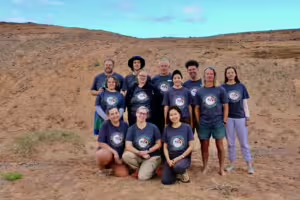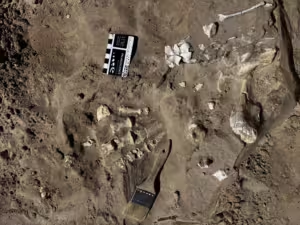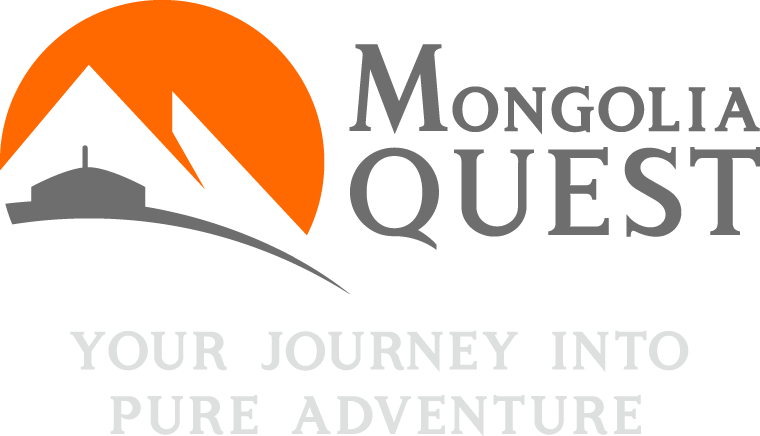Imagine walking through the vast expanse of Mongolia’s Gobi Desert, where the sands and rocks hide the secrets of ancient giants—the dinosaurs that once roamed this land. The Gobi Desert was more than just a destination; it became a journey back in time for the participants of a recent paleontological expedition, where every discovery brought the past to life.
Why Mongolia for Paleontology Expedition?
The Gobi Desert is world-renowned as one of the richest areas for dinosaur fossils, with species like Velociraptor, Gallimimus, and Tarbosaurus. For over a century, paleontologists have uncovered treasures here. However, since the early 2000s, illegal excavation and fossil poaching have posed significant threats. The expedition contributed to ongoing international efforts to repatriate stolen fossils, using cutting-edge techniques to trace their origins back to the Gobi.

© Mongolia Quest
The Expedition Experience
In September 2024, adventurers and scientists embarked on a thrilling two-week paleontological expedition led by Associate Professor Phil Bell and Dr. Nic Campione from the University of New England. This journey was more than a scientific exploration—it was a hands-on adventure where participants joined experts in discovering, excavating, and cataloging dinosaur remains while also contributing to efforts against fossil poaching.
Beyond the scientific work, participants fully immersed themselves in Mongolia’s rich cultural heritage. They spent evenings under the vast Gobi sky, enjoying meals prepared by a Mongolian chef and watching dramatic sunsets that served as a perfect backdrop for fireside discussions. The quiet, starry nights provided moments of reflection after a day filled with exploration and discovery.
Cultural and Environmental Interactions
The expedition was not just about unearthing fossils—it was about connecting with the breathtaking, rugged beauty of the Gobi Desert. Participants experienced the profound stillness of the landscape, where they learned not only about dinosaurs but also about the delicate balance of this fragile ecosystem.
“Paleontology is about much more than finding new discoveries,” Dr. Nic Campione reflected. “It’s about exploring time scales of millions of years and understanding our place in the history of life.” This unique perspective was one of the highlights of the expedition, offering participants a chance to engage deeply with both the ancient past and the present beauty of the Gobi.

© Mongolia Quest
Challenges and Ongoing Efforts
Bell described the ongoing challenges of protecting fossil sites from poachers: “The famous Saurolophus site in the Gobi has been heavily targeted, complicating preservation efforts.” Using techniques like geochemical fingerprinting, Bell and his team are working to identify and repatriate stolen fossils. This expedition, organized in partnership with Mongolia Quest and the Mongolian Paleontology Institute, played a vital role in these conservation efforts.
For the adventurers who took part, this expedition offered a unique combination of thrill, discovery, and cultural immersion. As they trekked through the Gobi Desert and unearthed ancient fossils, they also contributed to protecting Mongolia’s rich paleontological heritage. This was more than a scientific expedition—it was an adventure into deep time, providing participants with an unforgettable, hands-on experience in one of the world’s most iconic fossil sites.
A Legacy of Exploration
Mongolia Quest has been at the forefront of paleontological education and exploration since it organized the first expedition in 1996 with renowned paleontologist Dr. Jack Horner from the University of Montana. This pioneering effort laid the groundwork for subsequent expeditions, including those led by Dr. Phil Currie from the University of Alberta, all in cooperation with the Mongolian Institute of Paleontology. Through these expeditions, Mongolia Quest has become a leader in educational travel, allowing participants to engage directly with the rich paleontological heritage of Mongolia.



